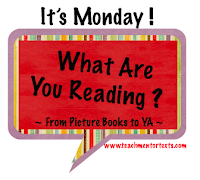One of the first questions that I had for Jim dealt with how many questions he would like to see teachers ask within the course of a lesson and his response to me was predictably that the answer depends on the type of lesson. Jim writes about the distinction between intensive-explicit questions and constructivist questions. Thinking back to my previous post about why teachers ask questions, the way that teachers should use these questioning techniques is dramatically different depending on the type of lesson that they are giving.
One of Jim Knight's favorite thinking prompts is one where Mo Cheeks, a basketball coach, helps a young girl as she struggles to remember the words of the National Anthem before a televised game. If I think about this prompt in an intensive-explicit way, I could use this prompt to teach about a story with the following questions:
- What is the scene?
- Who are the characters?
- What is the problem?
- How is the problem resolved?
Funny, how I would have said that these are open-ended questions until reading Jim Knight's chapter on Effective Questioning. The truth is that all of these question have finite responses and arguably, they even have right and wrong answers. I have tried to stay away from closed-ended questions, but in this case, I think that this lesson and these questions would provide an effective and engaging lesson. To answer my original question about how many questions this lesson would contain, I would think that it would contain at least four and probably more.
So could I think about this lesson from a constructivist's point of view?* What if I asked students to think about the elements of a story? I could assume that they know the four elements from above, but I could also give a quick mini-lesson about them, even presenting or creating a chart so that the students would have a tool of independence. Then, I could ask:
- How does this story contain these story elements?
If I asked only this one question, I wonder how the students would manage. Would this one question be enough to keep them on task and engaged? I'm thinking that it would. It occurs to me that this is a powerful way to differentiate a lesson. If I were to take the constructivist approach, then my higher students could independently develop responses about the scene, characters, problem, and resolution. I could scaffold other students by taking a more intensive-explicit approach and guiding them through the questions.
If anyone tries this lesson, I would love to hear about it. I would also love to hear about lessons that combine an intensive-explicit approach with constructivism.
*I am not claiming ownership of this idea because I read it in an article that I read recently, written by, I believe, Jim Knight. A commercial served as the basis for an intensive-explicit lesson on the components of a story, but also as a constructivist lesson about what the creators of the commercial did do make it persuasive. With the availability of so much information via tweets, posts, wikis, books and articles, I can't remember where I read this idea so that I can properly reference it. If anyone knows, please share so that I can not only cite the source, but also give a shout out to creative ways of embedding media into lessons.
*I am not claiming ownership of this idea because I read it in an article that I read recently, written by, I believe, Jim Knight. A commercial served as the basis for an intensive-explicit lesson on the components of a story, but also as a constructivist lesson about what the creators of the commercial did do make it persuasive. With the availability of so much information via tweets, posts, wikis, books and articles, I can't remember where I read this idea so that I can properly reference it. If anyone knows, please share so that I can not only cite the source, but also give a shout out to creative ways of embedding media into lessons.
Be well!
Melanie Meehan
































.png)


.jpg)






